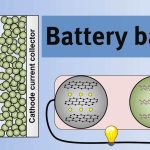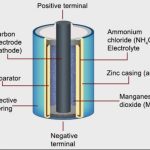There are several equations and mathematical formula which interconnect and govern the various parameters related to an electrical circuit such as resistance, current, voltage and so forth. We will learn some of the basic laws of electricity here, especially those related to resistance and its relationship with current, voltage and temperature.
The Ohm’s Law
The most basic mathematical formula governing the relationship between resistance, current and voltage is;
V = I * R
Where V, I & R stand for voltage, current and resistance respectively.
This equation suggests that for a given resistance, the amount of current that flows in the circuit is directly proportion to the potential difference across it. The above equation is also known as the Ohm’s law.
There is yet another definition for Ohm which leads us to another equation and this definition states that an Ohm is that amount of resistance which causes heat to be generated @ 1 watt if a current of 1 ampere is passed through the circuit which gives the equation as follows;
P = I2R
Where P is the power, and it depends on the square of the current for a given resistance.
The heat energy generated as a result of this resistance can be calculated by multiplying the above equation with the amount of time for which the current passes through the material and is given by;
Heat Generated = I2Rt
What is Resistivity?
Resistivity is a closely related concept to resistance as the name itself suggests and is also known as specific resistance. It can be defined as the resistance offered by a material to the flow of current per unit length of that material across reciprocal per unit area of cross-section and is given by the equation;
p= RA/l
Where p is resistivity, R is resistance, A is area of cross-section, l is length of the material.
Since resistivity is proportional to resistance, it also varies with temperature in a similar fashion
Temperature Coefficient of Resistance
We have talked several times about the variation of resistance with temperature and the equation governing the same is as follows;
dR/R = α dT
where dR is the change in resistance with change in temperature dT and α is the coefficient of resistance. Hence it gives a measure of the change in resistance per unit change in temperature for a given material.
Superconductivity
We learnt that resistance usually increases with the increase in temperature and vice versa so you must be thinking that if we cool a material to a certain temperature, will its resistance disappear totally? Well you were thinking along those lines then you are very close to understanding the concept of superconductivity but that would be taken up in a separate article later on. But it would be interesting to know at this stage that ordinary refrigerating temperatures would not do the trick but you have to maintain temperatures somewhere near the absolute zero range which is nearly -273 degrees Celsius. Cool – isn’t and equally paradoxical to know that the Satan of resistance is not killed in the fire of hell but the freezing cold!



Comments are closed